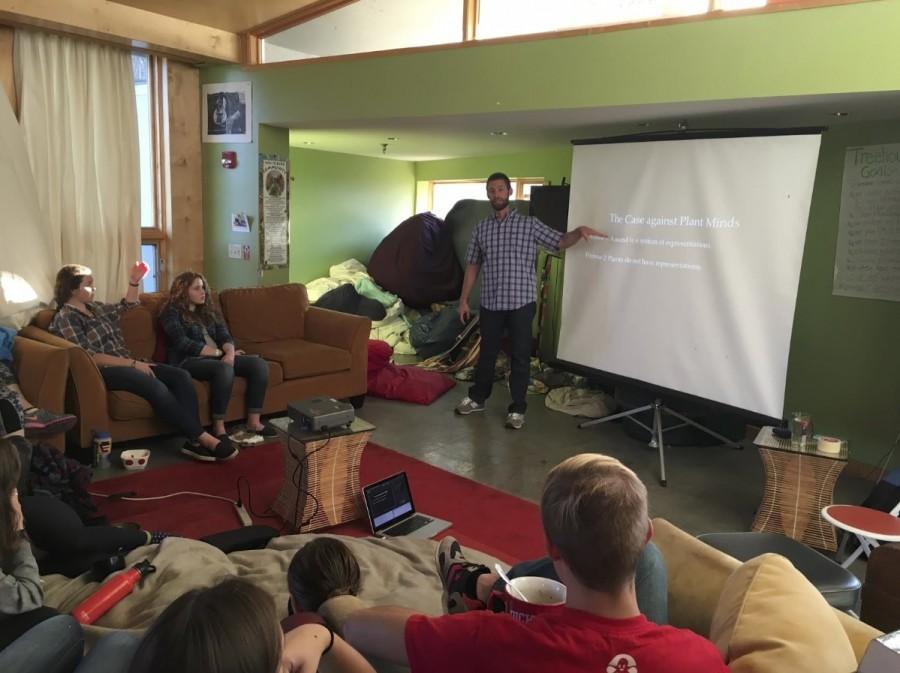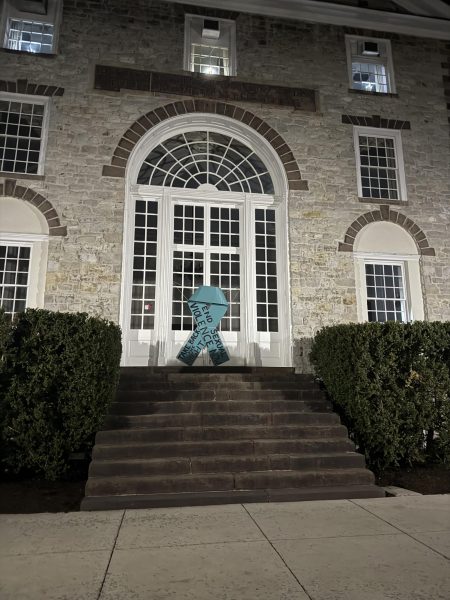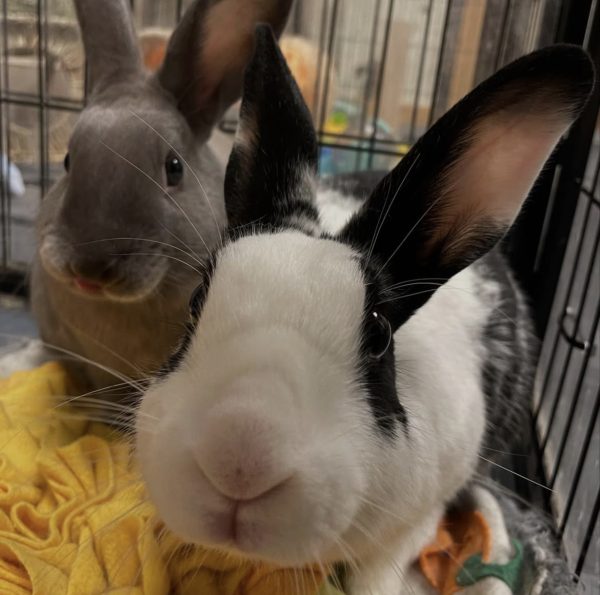Student-Run Sustainability Clubs Dwindle
Photo Courtesy of Wesley Lickus ’17
Residents of the Treehouse hope to host meetings and discussions open to all students on campus.
Dickinson markets itself as a national leader in sustainability education, but the growth of administrative offices devoted to sustainability initiatives, coupled with the dissolution of EarthNow and SISA (Students Interested in Sustainable Agriculture) last year, has left some worrying that student-run environmental activism is on the decline.
“As of right now the only student run environmental club [on campus] is the Treehouse,” confirmed Peter Brooks ’18, clubs liaison for Student Senate. The Treehouse, formally known as the Center for Sustainable Living, is a special-interest house that can accommodate 14 students each semester. Brooks says that he is “in the middle of a discussion with a new environmental group that wants to come to campus.”
During the 2014 to 2015 academic year, EarthNow and SISA, groups devoted to environmental activism and sustainable agriculture, respectively, merged into one organization to compensate for dwindling memberships. The resulting group, which the members named Roots, dissolved at the end of the school year.
The lack of student-run environmental organizations has left some students searching for a place to practice activism. Billy Irving ’19 said he was underwhelmed by the lack of student-run environmental organizations in his first semester on campus.
“At the student activity fair at the start of school I was looking for an environmental or sustainable organization and I didn’t really see any,” Irving said. “The Center for Sustainability Education is a great resource, but I was really hoping to be a part of something student run.”
The Treehouse piqued Irving’s interest during his college search, and he applied and has been accepted to live there for the Spring 2016 semester. He says that he wishes he could have been a member of EarthNow before it fell through.
Caitlin Doak ’16, a Treehouse resident who hopes to make the house an open resource for community organizing, says that environmentalism has been “institutionalized” on Dickinson’s campus. Doak speculates that with organizations such as ALLARM and CSE offering paid internships in environmental activism and sustainability, there has been less demand for clubs like EarthNow.
“[Students] were not as willing to be involved in a grassroots, student-run organization when they could get paid to do it,” Doak said, speaking about the dissolution of environmental clubs such as EarthNow and SISA.
Doak says that there is still a need for environmental activism and education outside of the Treehouse, ALLARM and CSE.
“As an institution [the Dickinson community is] doing much better for the environment [than in the past], but that doesn’t mean that we’re done or that there is no place for environmental activism,” she said. “Student groups should be political because institutions [like Dickinson] can’t be political.”
Lindsey Lyons, assistant director for CSE, said that “environmental clubs and organizations have ebbed and flowed at the college for a long time,” and hesitated to point to a single causal factor for the current lull in student-run activism.
“In my opinion, the long term sustainability of clubs is really driven by student leadership, who is here, who is abroad, who has graduated, how have they planned for the future, [and more],” Lyons said. “I do feel strongly that you cannot directly connect decrease in environmental groups to [the growth of CSE].”
Lyons points out that while “sustainability initiatives and institutional commitments have grown, particularly since 2008” and that the college “has lost student membership in EarthNow, Sisa and Reinvest Dickinson,” CSE has not increased its number of paid positions since 2012.
“We have employed roughly the same number of students since 2012 (nine to 12 paid positions/semester and three to four paid summer),” Lyons said. “In fact, we had more in paid interns in 2013 (12 per semester and four per summer) than we do now in 2015 (nine per semester and three per summer).”
Lyons says that “students can advocate in a way that administration never could, particularly in community, national, and international issues,” and that administrative programs cannot fill the void of student-run groups.
“Colleges are a place for students to learn how to speak up, organize, motivate, create action and advocate for things they believe in,” Lyons said. “The Center for Sustainability Education helps students realize this potential. We’ll never run out of issues to care about, but need to connect students to the issues that exist and help them feel empowered to want to make change. Whether it be issues of justice, natural resources, local food, community building… we will never be at a place where there isn’t work or action for students to ‘do.’ No matter how many interns CSE has, or how many programs we offer, the potential for student advocacy is endless.”
Echoing Lyons, Doak said that “activism can never be institutionalized,” and would like the Treehouse to become a place where students can hold meetings and have an outlet for talking about environmental activism. Although Doak thinks that this would not be feasible for the near future, she said that one of her goals is for Dickinson students to feel like members of the Treehouse even if they do not live there or know anyone who is a resident. Doak said that she and others ultimately hope to increase the diversity of individuals involved in the environmental movement on campus.
“One thing that I see is missing [on campus] is environmental justice,” Doak said. “There are gaps between the social justice side of campus and the environmental side of campus and they really do go hand in hand.”
For more information about sustainability initiatives on campus, follow CSE on Facebook or Twitter or email Doak at [email protected].






